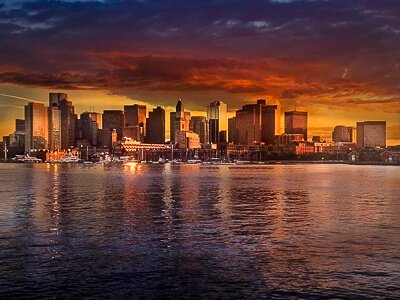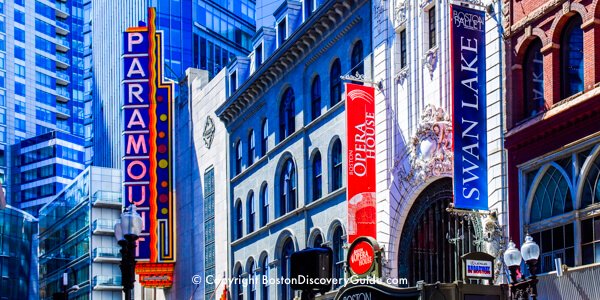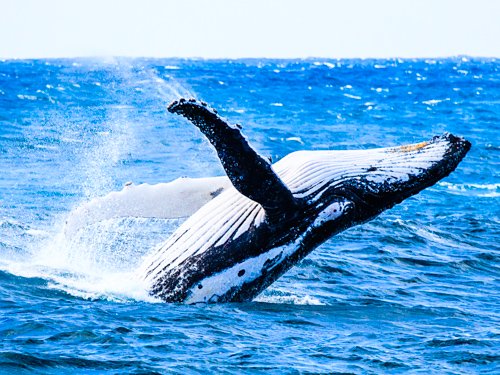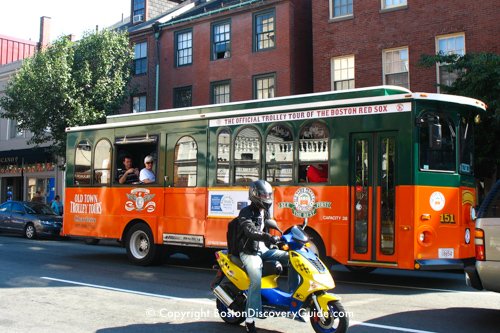Extreme Boston weather . . . not what you want to experience when visiting Boston!
But depending on the season when you visit, you might.
The good news is that we seldom get hit by extreme storms.
But when we do get extreme conditions, there are 3 especially dangerous types you should be aware of:
- Howling nor'easters
- Blinding blizzards
- Hurricanes followed by torrential downpours
Usually these storms are forecast well in advance - but our coastal location makes weather patterns unpredictable. Rapid changes in temperature and other conditions means extreme condition can develop with little to no warning.
If you're traveling to Boston, check the weather forecast before you come to see if extreme weather is predicted. And if it is, be sure you know what to do ... just in case.
Top photo credit: Make Way for Ducklings statues in Boston's Public Garden during a January snowstorm, (c) Boston Discovery Guide
Boston Discovery Guide is a reader-supported publication. When you buy through our links, we may earn a commission at no additional cost for you. Learn more
What's a Nor'easter?
A nor'easter (sometimes also called a "northeaster," although no real Bostonian pronounces that middle "th") is a storm that occurs when an area of low pressure forms over the Atlantic Ocean and moves up the North American coast toward Boston just in time for strong northeast winds to blow in from the ocean ahead of it.
When the low pressure area and the strong northeast winds collide, a storm - usually quite a ferocious storm - is the result. In fact, wind gusts can and do exceed hurricane strength.
If the low pressure area stays over land to the left of the coastline, usually Boston will get just heavy rain.
Well, not just "heavy" - more like torrential downpours.
Flooding usually occurs as well, especially along the coast. If you have a smartphone, you will probably get automated weather alerts about flooding.
However, if the low pressure goes to the right and moves off the coast and over the ocean, that's when you need to really watch out!
If the temperature is cold enough, this low pressure movement can rapidly turn into a blizzard, bringing heavy snow, very strong wind, and destructive ocean waves.
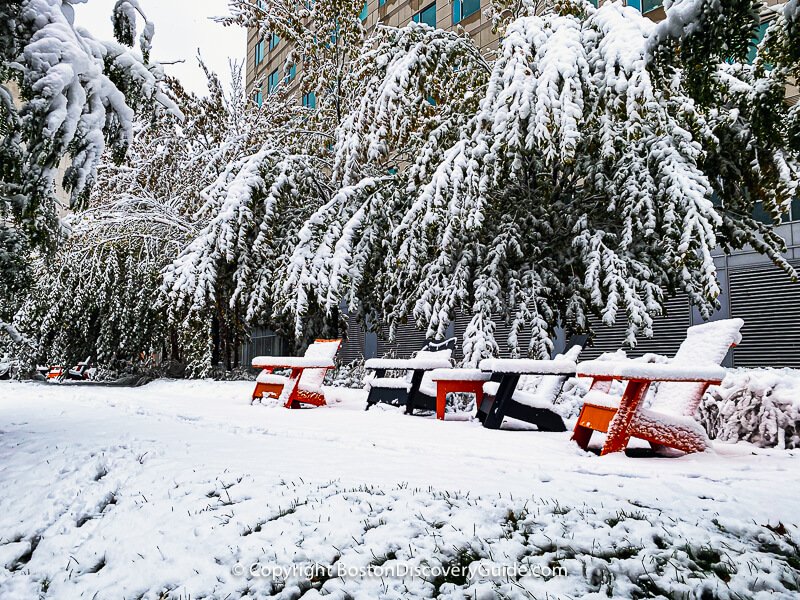
Here's the worst part: if a circular pattern develops off the coast that continues to bring moisture over land, the storm can last for days!
While the frequency of nor'easters can be hard to predict, we typically experience one or more each year - sometimes merely rain, but during a typical year, you can count on snow as well. Occasionally a single storm will produce both - sometimes accompanied by thunder and lightening.
Not all nor'easters are blizzards, even when they produce snow - but when we do get a nor'easter producing blizzard conditions, look out!
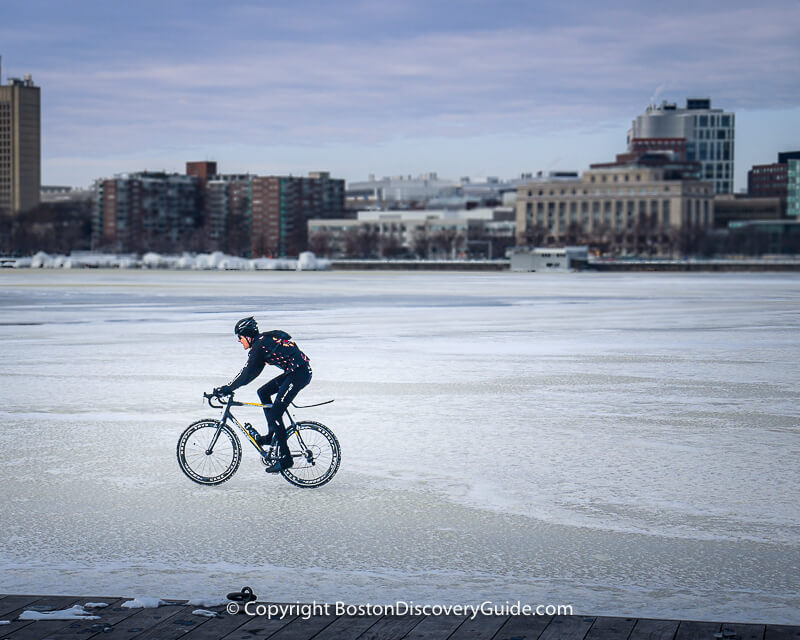
Blizzards in Boston
Are all blizzards nor'easters?
No, blizzards - technically, a storm with winds greater than 35 miles per hour (mph), very low temperatures, and visibility of less than 1/4 mile for 3 or more hours - can form in various ways.
And, of course, not all nor'easters are blizzards because they may produce rain or sleet instead of snow, or even snow but without enough prolonged wind and lack of visibility to qualify as a blizzard.
Blizzards may actually produce very little overall snow - what makes them dangerous are the sustained high winds and your inability to see as the snow falls. But some do produce huge quantities of the white stuff.
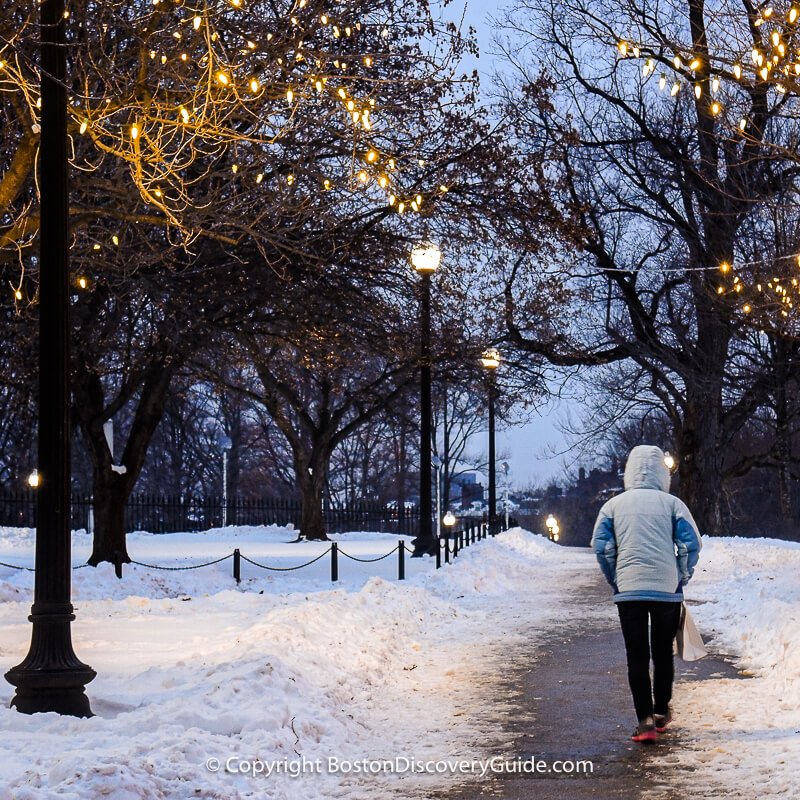
The most infamous nor'easter-turned-blizzard in recent memory, the Blizzard of 1978, dumped huge amounts of snow across the Northeast for 2 days in early February and shut down Boston for a week.
Boston recorded an all-time record (for that time) for the quantity of snow falling within a 24-hour period. Plows could not keep up.
Many people were trapped on highways for up to 6 days until they could be rescued, although not everyone survived. Carbon monoxide poisoning killed a number of people who left their cars idling in an attempt to keep warm, not realizing that snow had blocked their tailpipes. Fallen electrical wires killed others.
Over 100 people died.
From your perspective as a Boston visitor, whether a huge storm is a blizzard or a nor'easter doesn't matter because your response needs to be the same: stay inside until it's over!
Sure, going outside to experience the storm sounds exciting, but it can be dangerous. Why risk an emergency room visit for frostbite - or worse?
What is the Maximum 1-Day Snowfall for Boston?
Are you wondering, "How much snow does Boston get in one day?" The answer is, "Quite a lot!" Take a look:
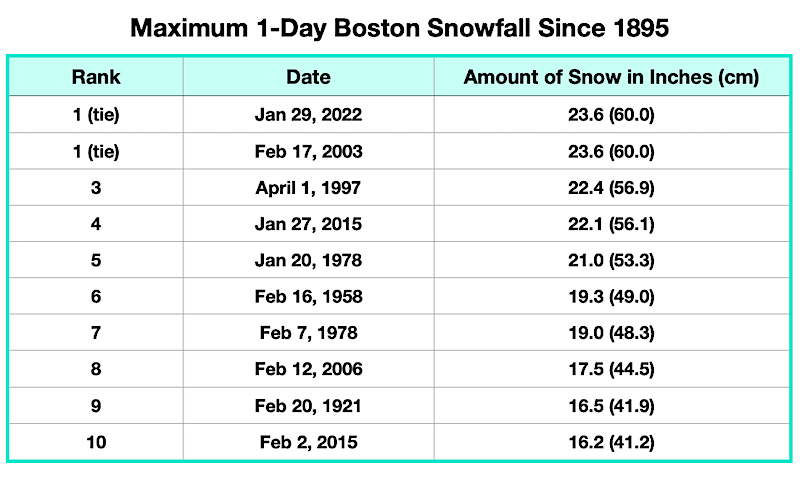
In case you're thinking that the maximum snowfall of slightly less that 24 inches, or almost two feet doesn't sound like all that much, keep in mind that while some winter storms don't last longer than one day, some do. A few have been known to stretch for three or more days, although technically, that's usually due to more than one back-to-back snowstorms.
And even just two feet of snow is quite a lot if you're trying to walk through it, shovel it off your sidewalk, or snow-plow it off a street.
Hurricanes in Boston
Hurricanes impact Boston much less frequently than nor'easters and blizzards - but the rare direct hits can be destructive and very dangerous.
On average, the Boston area gets hit or brushed by a hurricane approximately once in every 6 years. A direct hit typically occurs only twice in every century.
To be considered a hurricane, a storm must sustain winds of at least 74 miles per hour, and form over the ocean. Category 5 storms are the worst, with winds exceeding 155 mph.
Fortunately, most Boston hits and brushes involve Category 1 hurricanes. However, they can still produce extensive damage, power outages, and flooding.
In 1954, Hurricane Carol struck with such force that high wind gusts toppled the steeple of Old North Church in the North End. In 1960, Hurricane Donna hit from the south with 80 mph wind. In 1991, Hurricane Bob passed over - quickly, thankfully - with 75 mph wind.
Right before Halloween in October, 2012, Hurricane Sandy hit Boston with Category 1 force as just fall tides reached their highest levels.
Fortunately, the city escaped relatively unscathed, although major flooding along with extensive damage from fallen trees and branches occurred in surrounding areas.
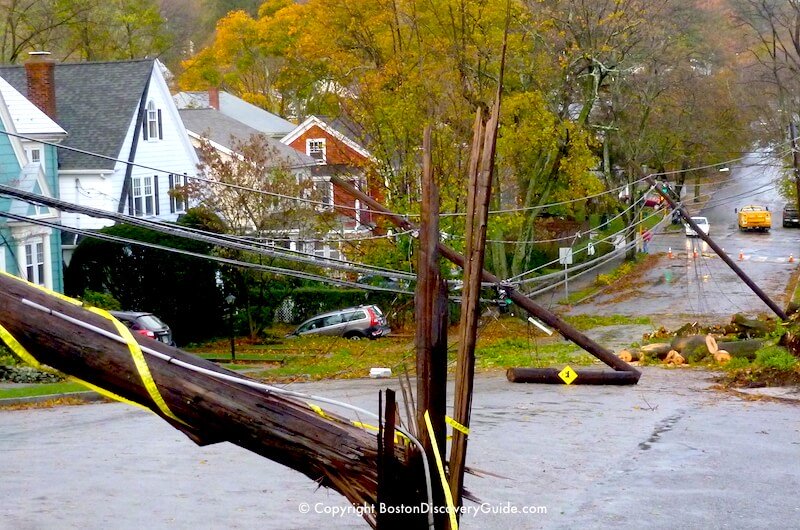
As with nor'easters and blizzards, if a hurricane strikes while you're here, stay inside!
Although Boston Harbor often protects the city from the brunt of the storm surges and flooding, air-borne tree branches and other articles zooming by due to high winds can be quite dangerous.
Boston Winter Weather Activities
- Best winter Boston tours - Don't let cold weather slow you down!
- Rainy day activities - You always need a "Plan B" for Boston weather
- Where to ice skate in Boston - Best rinks in Boston!
- Winter break in Boston - Fun February activities
- Skiing near Boston - Where to enjoy the snow!
Bottom Line?
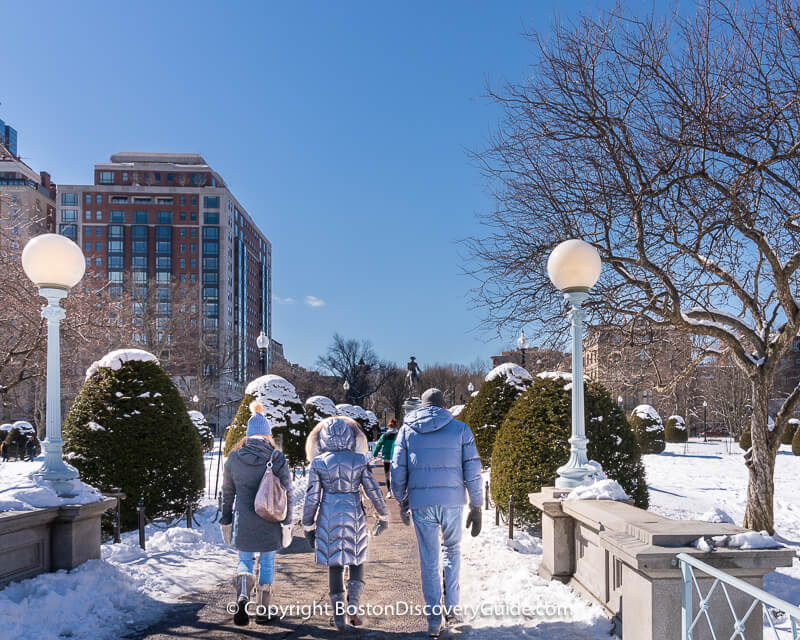
Fortunately, a local saying sums up it up accurately: "if you don't like the weather in Boston, just wait one moment. "
Summer thunderstorms end quickly. Bitter January blizzards abruptly give way to a few sunny days in the 50s or higher. Brilliant sunshine follows on the heel of a storm.
Each week, each month, each year follows a unique path.
Find out more about Boston's distinct seasons
Stay inside on the relatively rare occasions when Boston weather conditions are quite bad. Otherwise, dress sensibly and know that if you don't like the weather at the moment, it's sure to change soon.
And before you leave home, check the weather forecast for Boston to see what's predicted for your visit.
Find Fun Activities for Your Visit to Boston
Uneasy about the Weather? Check the Forecast
If extreme weather hits, you can check to see if extensive power outages are occurring on the Massachusetts Emergency Management Agency's website: http://mema.mapsonline.net/public.html
More Boston Activities for Less-Than-Ideal Weather
No matter what the weather forecast may be, you always need a "Plan B" when you visit Boston.
If you encounter heavy rain, snow, or sleet during your Boston visit, try these activities:
- Best winter Boston tours - Don't let cold weather slow you down!
- Boston indoor winter activities - Most of these suggestions work well for summer too - even for hot muggy days when you don't want to be outside
Boston Weather
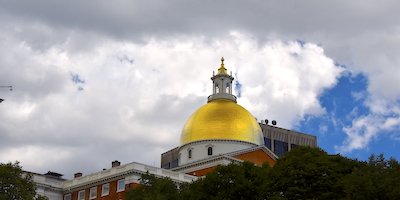
Boston Weather by Season - Blizzards, Hurricanes, Nor'easters - Boston Weather Forecast - Marathon Day Weather History - January Weather - February Weather - March Weather - April Weather - October Weather - November Weather - December Weather - Boston Weather Guide
More Articles Related to Boston Weather
- How to pack for Boston weather - even if you don't know exactly what to expect
- Find out what to expect during each season in Boston
- Expecting bad weather during your Boston visit? Find a hotel near where you'll spend the most time
- Rainy day activities in Boston
- Find about about what kind of weather to expect each month: January | February | March | April . . . October | November | December
Need a Boston Hotel or Apartment?
Use this handy map from Booking.com to find the perfect place to stay. Just enter your dates to find what's available, see the best rates, and make your reservations.


